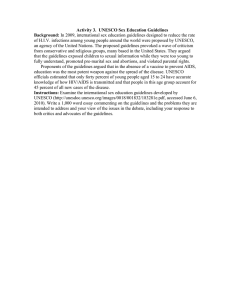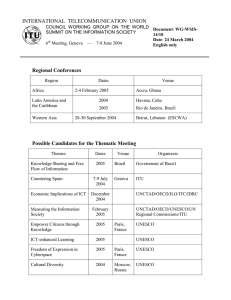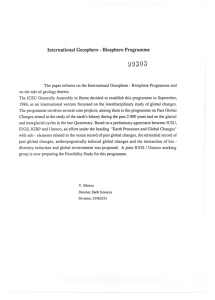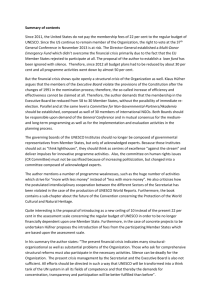What is UNESCO
advertisement
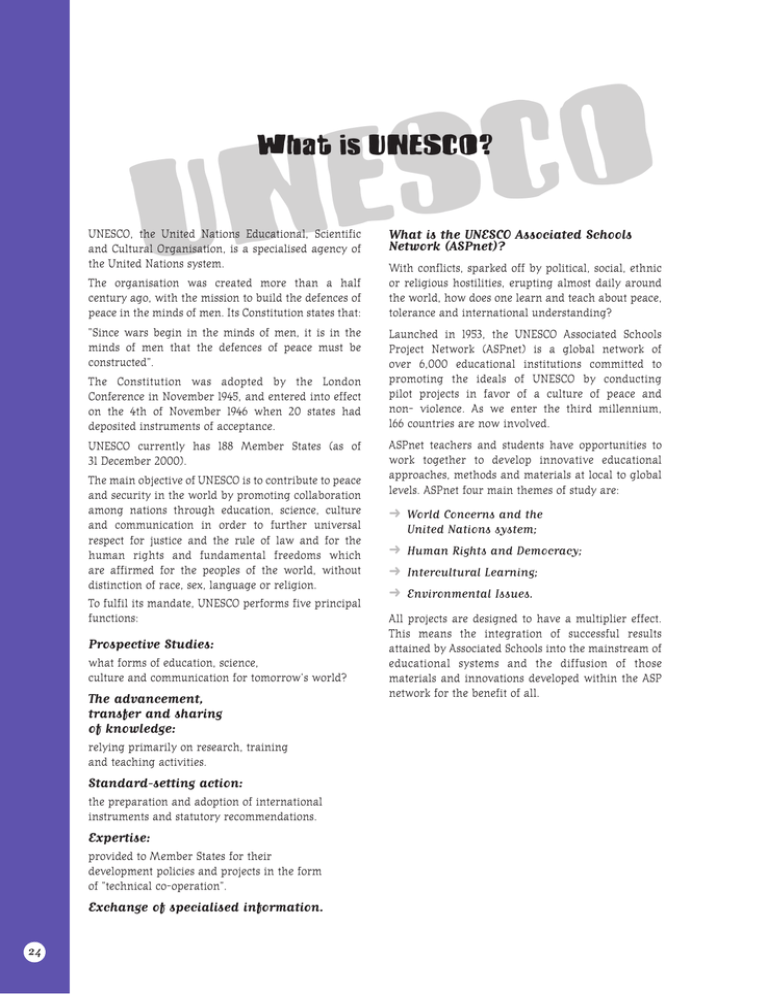
O C S E UN What is UNESCO? UNESCO, the United Nations Educational, Scientific and Cultural Organisation, is a specialised agency of the United Nations system. The organisation was created more than a half century ago, with the mission to build the defences of peace in the minds of men. Its Constitution states that: “Since wars begin in the minds of men, it is in the minds of men that the defences of peace must be constructed”. The Constitution was adopted by the London Conference in November 1945, and entered into effect on the 4th of November 1946 when 20 states had deposited instruments of acceptance. UNESCO currently has 188 Member States (as of 31 December 2000). The main objective of UNESCO is to contribute to peace and security in the world by promoting collaboration among nations through education, science, culture and communication in order to further universal respect for justice and the rule of law and for the human rights and fundamental freedoms which are affirmed for the peoples of the world, without distinction of race, sex, language or religion. To fulfil its mandate, UNESCO performs five principal functions: Prospective Studies: what forms of education, science, culture and communication for tomorrow's world? ∑The advancement, transfer and sharing of knowledge: relying primarily on research, training and teaching activities. ∑Standard-setting action: the preparation and adoption of international instruments and statutory recommendations. ∑Expertise: provided to Member States for their development policies and projects in the form of "technical co-operation". Exchange of specialised information. 24 What is the UNESCO Associated Schools Network (ASPnet)? With conflicts, sparked off by political, social, ethnic or religious hostilities, erupting almost daily around the world, how does one learn and teach about peace, tolerance and international understanding? Launched in 1953, the UNESCO Associated Schools Project Network (ASPnet) is a global network of over 6,000 educational institutions committed to promoting the ideals of UNESCO by conducting pilot projects in favor of a culture of peace and non- violence. As we enter the third millennium, 166 countries are now involved. ASPnet teachers and students have opportunities to work together to develop innovative educational approaches, methods and materials at local to global levels. ASPnet four main themes of study are: ∑➜ World Concerns and the United Nations system; ∑➜ Human Rights and Democracy; ∑➜ Intercultural Learning; ∑➜ Environmental Issues. All projects are designed to have a multiplier effect. This means the integration of successful results attained by Associated Schools into the mainstream of educational systems and the diffusion of those materials and innovations developed within the ASP network for the benefit of all. source : UNESCO The culture of peace is a concept that inspires the work of individuals, groups, organizations and institutions around the world whose actions correspond to those of the United Nations. UNESCO Headquarters, Paris, France “ “"We the people of the United Nations, determined to save succeeding generations from the scourge of war…” Charter of the United Nations, 1945 In proclaiming "the year 2000 as the International Year for the Culture of Peace", the United Nations General Assembly defined a culture of peace as the " values, attitudes and behaviours that reflect and inspire social interaction and sharing based on the principles of freedom, justice and democracy, all human rights, tolerance and solidarity, that reject violence and endeavour to prevent conflicts by tackling their root causes to solve problems through dialogue and negotiation and that guarantee the full exercise of all rights and the means to participate fully in the development process of their society". 25

